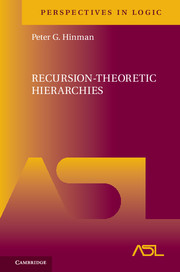Introduction
Published online by Cambridge University Press: 31 March 2017
Summary
The theory set out in this book is the result of the confluence and common development of two currents of mathematical research, Descriptive Set Theory and Recursion Theory. Both are concerned with notions of definability and, more broadly, with the classification of mathematical objects according to various measures of their complexity. These are the common themes which run through the topics discussed in this book.
Descriptive Set Theory arose around the turn of the century as a reaction among some of the mathematical analysts of the day against the free-wheeling methods of Cantorian set theory. People such as Baire, Borel, and Lebesgue felt uneasy with constructions which required the Axiom of Choice or the set of all countable ordinals and began to investigate what part of analysis could be carried out by more explicit and constructive means. Needless to say, there was vigorous disagreement over the meaning of these terms. Some of the landmarks in the early days of Descriptive Set Theory are the construction of the Borel sets, Suslin's Theorem that a set of real numbers is Borel just in case both it and its complement are analytic, and the discovery that analytic sets have many pleasant properties — they are Lebesgue measurable, have the Baire property, and satisfy the Continuum Hypothesis.
A natural concomitant of this interest in the means necessary to effect mathematical constructions is the notion of hierarchy. Roughly speaking, a hierarchy is a classification of a collection of mathematical objects into levels, usually indexed by ordinal numbers. Objects appearing in levels indexed by larger ordinals are in some way more complex that those at lower levels and the index of the first level at which an object appears is thus a measure of the complexity of the object. Such a classification serves both to deepen our understanding of the objects classified and as a valuable technical tool for establishing their properties.
A familiar example, and one which was an important model in the development of the theory, is the hierarchy of Borel sets of real numbers. This class is most simply characterized as the smallest class of sets containing all intervals and closed under the operations of complementation and countable union.
- Type
- Chapter
- Information
- Recursion-Theoretic Hierarchies , pp. 1 - 4Publisher: Cambridge University PressPrint publication year: 2017



